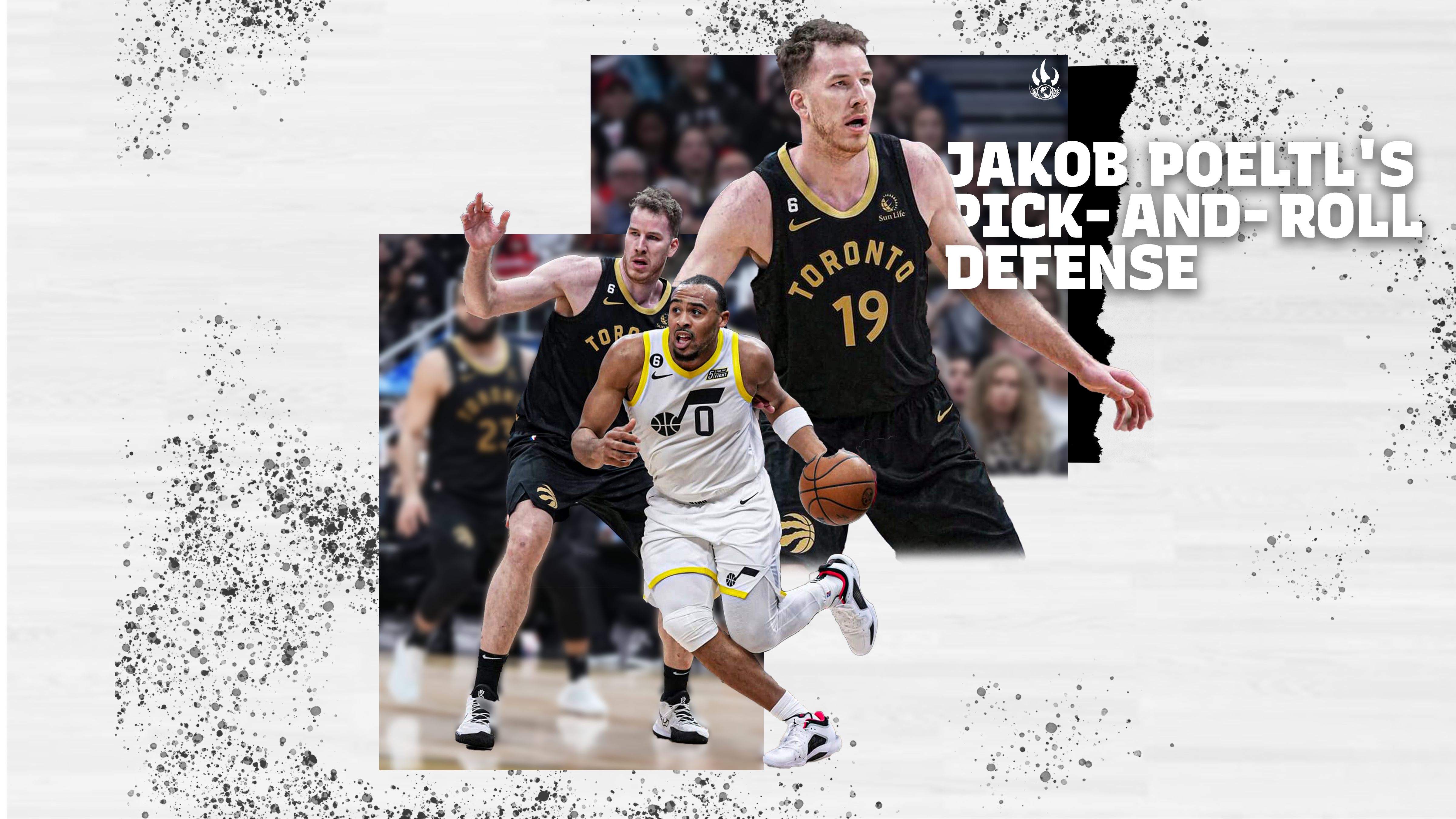Nick Nurse said a revealing thing before Jakob Poeltl's first game (of his second stint) as a Toronto Raptor:
"I'll just be interested to see how we end up using him or how we feel like it's best to use him defensively," he said. "He was sitting in drop coverage, deep, deep drop coverage most of the season... But we don't usually play that way.
"[His presence] gives us a chance to have another coverage, if that's what he's going to excel at. And maybe we can figure out how to excel that way ourselves even though that's not one of our things we do.
"Or we're gonna get him up there [at the level] and see what happens."
In other words, the Raptors are loathe to use deep drop as a defensive coverage, but they'll give it a try if that's the only way to find success with Poeltl in the game. Nurse knows Poeltl can improve the defense, but he doesn't want to sacrifice the philosophy unless he has to. Poeltl gives them an entirely new aspect that hasn't been available to the Raptors since Marc Gasol wore the white and purple. He's gigantic and an excellent rim protector; however, that doesn't mean the Raptors are going to amend the entire team's constitution because that's how Poeltl usually plays. Instead, they've asked him to adapt to the team.
By and large, it's worked wonderfully.
Poeltl hasn't played a single possession in deep drop, to my eye. He has once or twice been caught with his pants down, so to speak, with him defending an off-ball action a beat too long while his man sets an on-ball screen, so he's caught lower than intended by the time the pick comes to fruition. (He's recovered well in those situations.) But mostly he's been high, active, and in space. To that point, the difference between playing in a high drop and playing at the level is only the gap of a foot or two. Poeltl mostly hasn't been showing, blitzing, or switching. But he is in space, and whether you want to call that a high drop or at the level is mostly a matter of semantics.
As long as Poeltl's being in space doesn't prevent him from recovering to the rim and defending it, the Raptors can have their cake and eat it too. So far, so cake-y. (Uh, or something.)
Poeltl has been incredibly active up top. He hasn't had to challenge any high-level pull-up 3-point shooters yet (and he fouled a three already in just two games) so we'll see how he fares against players like Damian Lillard and his ilk. But he's moved well in space, scampered back to the paint with his patented mobility, and done well recovering down low to challenge shots.
There's some smooth connectivity between defenders going on. Toronto has at times tagged the roller behind Poeltl and played like a normal defensive time, letting players recover to their original marks after a few beats. The Raptors generally insist on going over screens, which is a little bit of a head-scratcher at times, but Poeltl's ability to start at the level and stay in the play no matter where the ball funnels allows Toronto's point-of-attack defenders to chase their way back into the play. He's unlocked plenty of good.




